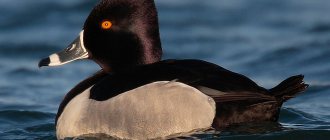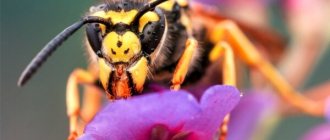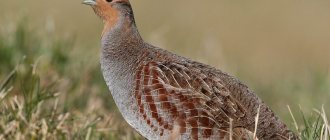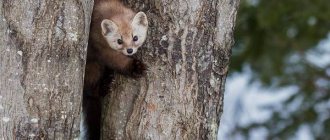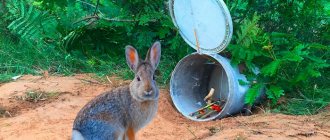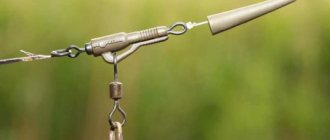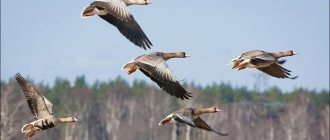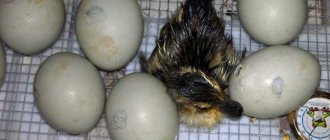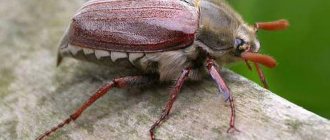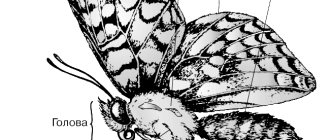Partridge has long been one of the traditional objects of sport and commercial hunting. This bird is often compared to domestic chicken, however, both the description of the appearance and the size and taste of the meat have significant differences. The genus partridge belongs to the pheasant family and includes only three species. Partridge hunting has its own subtleties and characteristics. They largely depend on what type of game you choose and the method of hunting (gun, traps), so it makes sense to study the description of each of them.
Appearance, habitat, habits of partridge
The partridge has many relatives. These include capercaillie, quail, and many representatives of the chicken family. Therefore, she also has tasty and valuable dietary meat. You will not find partridge in large forest areas. But in the steppe with a small number of bushes and in the forest-steppe several varieties of this bird live. They can be found in fields, meadows, hayfields, pastures, forest edges, potato fields, bush thickets, low swamps, and clearings.
In addition to the steppe partridges, in the northern territories, where there is also no forest, but instead of the steppe there is tundra and forest-tundra, there is a population of a beautiful bird - the white partridge. They inhabit alpine meadows, foothills, tundra thickets, and places near rocks.
Almost all partridges are tied to their place of residence. They do not wander from place to place, and do not fly away to warm seas for the winter. But the inhabitants of the tundra are some exception. They also do not fly south, but move to a slightly warmer region - the forest-tundra adjacent to the tundra.
There is more food there in winter, for example, you can peck cedar cones, buds of bushes and trees, catkins, juniper seeds, and find frozen berries under the snow. These feathered creatures do not fly through the forest, but simply roam the ground and look for food there. The summer partridge feeds on berries, insects, stems and rhizomes of herbs, buds, and flowers.
Partridges fly well, but only do so in extreme cases.
Partridges do not really like to fly, although they can do this. If there is a slight degree of danger, the partridge will simply prefer to quickly run along the ground and hide in bushes or rock crevices. But if she sees a serious predator or hunter with a gun, then she feels a clear threat to her life and instinct requires her to fly.
She takes off sharply, but flies fifty or eighty meters, then lands in the forest and hides. An inexperienced hunter may become confused when this bird flies noisily right next to him, and due to the slight shock, he lacks the reaction and intelligence to shoot.
More than twenty species of partridge live in the wild. They can be found on many continents. Among them there are endemic species that have a narrow habitat. In Russian forests, tundra, steppe and woodlands you can find five species of partridge: Tibetan, red, gray, Daurian, white.
The most popular is the gray partridge. It can be found not only in Russia, but also in Europe, Kazakhstan, and other parts of the world. It is adapted to live both on the edge of the forest and in the semi-desert zone. This species of bird is also found in river floodplains, weighs half a kilogram and has a body length of just over thirty centimeters.
The gray partridge is brown in color, red in places, with a white chest. Only an experienced hunter can distinguish a male and a female from each other, since they have almost the same outfit. But if you take a closer look, you can notice the brighter color of the male’s body.
Gray is the most common type of partridge
The white partridge weighs approximately seven hundred grams and lives in the northern tundra and forest-tundra. In summer it is motley and brownish-red, and by winter, like a hare, it changes color to white, so that owls and foxes do not find it against the background of snow.
The summer and winter plumage of the ptarmigan are very different
The red partridge is not a typical Russian resident. There is very little of it in other countries of the post-Soviet space. But in European countries, this elegant bird with bright red plumage can be found in many places.
Pictured is a red partridge
The Daurian partridge is listed in the Red Book of Russia. Its fishing is strictly prohibited and poachers are punished with rubles. This feathered bird with a fluffy beard has become so rare that it is occasionally found in the steppe regions. The population of these birds has also decreased in countries neighboring Russia. Only through joint efforts can we preserve this unique species of animal.
The Daurian partridge has a small beard, for which it is also called bearded
Tibetan partridge was recently found in our country, but now its populations have moved south, towards Tajikistan and Kyrgyzstan. This bird has beautiful black and white stripes on its chest.
The Tibetan partridge has brightly variegated plumage
Description and features
The partridge is most easily described as a small chicken with motley colors. Its weight is 500-700 grams, and its length reaches 40 cm. The round body is supported by strong legs. Males and females have no spurs on their legs.
The general color scheme depends on the habitat and can be brown, brown, red, almost white. The feather cover is not evenly colored; there are streaks of different sizes and colors. The coloring of the bird suggests that the main defense strategy is camouflage.
Birds molt annually. This happens in the middle of summer. Females molt after finishing hatching their offspring. The largest flight feathers fall out first. By the end of summer, the main feathers are completely renewed. In autumn it’s the turn of contour feathers. By the beginning of winter, molting ends.
The white partridge has a pronounced seasonal difference in color . Winter cover is white. Except for some tail feathers. They are black. The rest of the time they are brown, red, with a white lower body.
Sexual dimorphism is manifested in the size of the bird: males are larger. Bettas have slightly brighter colored feathers. Externally, the birds of both sexes are so similar that only a specialist will be able to recognize whether the partridge in the photo is male or female.
Hunting dates
The grouse hunting season begins at the end of August and ends at the beginning of winter. But the exact timing of partridge hunting depends on the region. In central Russia and the Southern Urals, hunting begins early, at the end of July and continues until the second ten days of November. In October, partridges inhabiting these regions gather at the mating grounds and start creating families.
After wintering, a pair of birds builds a nest and hatches the chicks. In the north of the country, only white partridge lives, which is hunted before the New Year holidays.
The partridge becomes very attached to its “soul mate”. By winter they always find a pair and if you shoot one of them, there will be no offspring in the spring. The male is monogamous and will not look for a new “wife” instead of a female killed by hunters. Poachers should remember this and not violate the hunting deadlines, so that our children and grandchildren can inherit a rich natural heritage.
By the beginning of the summer partridge hunting , the chicks have already turned into young large birds. But hunting ethics prohibits shooting too many partridges, otherwise few pairs will be created in the fall. If you are greedy and shoot a lot of game, the population will be reduced so much that in a couple of years there will simply be no one to hunt. And most likely then the authorities will make a complete ban on bird fishing for several years at once. Therefore, when hunting, you need to be moderate and not fill huge backpacks with prey.
When going on a partridge hunt, you must strictly adhere to the permitted time limits.
Bird search
The success of the hunt largely depends on how successfully the hunter was able to find the broods of the bird. Winter partridge is found in bird feeding areas. If there are berry fields in groves and bush thickets, then most likely birds in winter will also look for berries there, raking snowdrifts. They also look for seeds and grains that have fallen in the snow, and feed on the buds of the lower parts of trees and shrubs. Partridges also visit harvested fields to find grains of cereal crops there.
Summer and autumn partridge are more difficult to find. They live in birch and alder groves, peck buds and catkins there, and leave few traces of their presence. They can be found in thickets of ripe bird cherry, cranberry and some other berries.
They group there and peck berries, insects, and succulent stems. Birds especially love to eat berries, catkins and buds that have fallen from trees to the ground, since they do not have to waste time and energy on flying. And they don’t like to flap their wings too much.
Distribution and habitats
The partridge lives mainly in the southern and central regions. Preference is given to treeless spaces - steppe and forest-steppe. Until recently, they could often be found in the forest zone of the southern taiga, but due to the decline of agriculture in many areas and the resulting overgrowing of fields, they are gradually leaving these regions. Remaining only where at least something is still being processed.
Also, climatic conditions have a great influence on their distribution - long, deep, snowy winters with thaws have an extremely negative effect on their numbers.
Gray partridges are not migratory birds; they spend the winter together, forming flocks. In mid-spring, before the mating season, simultaneously with the snow melting, they begin to break up into pairs.
At the beginning of summer, they spend most of their time on the borders of cultivated fields, in small bushes, in tall grass along the edges of ravines and reclamation canals. As the young grow older, the brood begins to make short flights. They fly not often and not far, but at night they return to their original place.
In August, as the grain harvest progresses, birds move from the harvested fields to those areas of the land where they could be safe. Basically, these are areas between fields not used for agricultural planting, edges bordering the field, edges of ravines and lowlands overgrown with bushes. Moreover, hilly terrain is preferable to flat terrain.
Hunting partridge with a hunting dog
Partridge is caught in a variety of ways: with or without the help of a hunting dog, with a gun, or using passive methods, such as self-catching.
Harvesting different types of partridge with the help of a dog is the oldest fishing method. A hunter buys a puppy, develops hunting qualities in it, takes it into the bird’s habitat from a very young age and shows the dog the bird’s tracks.
A well trained and trained dog becomes an excellent helper. She will be able to find the bird and the hunter will only have to make the right shot. If the hunt takes place far from home and a person spends the night, then the dog becomes a faithful and reliable friend with whom it is not boring to while away the night near the fire.
It is very difficult to successfully find a partridge without the help of a four-legged assistant. This bird knows how to hide in the thickets and does not reveal its presence. But as soon as the hunter finds himself a couple of steps away from the partridges, they immediately quickly fly away and again hide about seventy meters away. Therefore, it is not always possible to prepare a gun for a shot.
In addition, partridges benefit greatly from their protective coloration. But a smart and trained dog, thanks to its excellent sense of smell, quickly finds a brood of partridges. She warns the owner where the birds are hiding. Thanks to the help of the dog, the owner manages to prepare the gun.
The dog suddenly rushes at the birds, they rise to the wing, but the hunter is already ready to shoot and is not shocked by the birds unexpectedly flying out. Thanks to the help of a pointing dog or a pointer, which are considered the best hunting dogs for catching partridges, it is possible to make an accurate shot at a flying bird.
The Drathaar and Shorthaired Pointer are the best pointing dogs for partridge hunting. They are easy to train, understand a person and his commands perfectly, and know how to make a stance, suggesting the direction where the birds are hiding. They can learn to swim to bring prey from the water directly into the hands of the owner without harming the bird. Pointers have the same excellent qualities as a partridge hunter.
Pointing dogs are the best assistants in partridge hunting
Hunting from the approach
You can hunt partridge without the help of a dog. To do this, you should dress in a camouflage-colored suit, take a firearm and go to the bird feeding area. To prevent cautious partridges from detecting a person, you should purchase clothing that is as similar in color as possible to the surrounding vegetation.
For a successful hunt, you should purchase good binoculars, through which you can see birds from a distance. Approach hunting is usually done in late autumn and early winter. Then the snow cover has already formed and it is easier to find traces of birds. It is quite difficult to find partridge camps in the autumn forest and green grass, and there is usually nothing to do here without the help of a dog.
A lot of time will be wasted, and careful and well-camouflaged partridges will not be in the field of view of the fisherman. But from the snow cover it is easy to find points where birds forage for berries, grass, and buds in the snow. All you have to do is look carefully through binoculars and quietly, quietly approach the birds’ habitat, with a gun at the ready.
Clothing should not only have the color of the surrounding nature, but also be soft, not rustling, and not restrict movement. If you follow all these tips, you can get very close to the birds, within shooting distance, without being detected by them.
Weapons and ammunition
For successful game hunting, you should choose the right hunting equipment. The most effective shotgun is considered to be 16 or 12 gauge. Such a weapon has sufficient destructive power to confidently defeat a fast-flying target at a distance of up to 50-60 m. The peculiarity of the partridge’s behavior is its sharp take-off almost from under the hunter’s feet. At the same time, the flight is characterized by great swiftness, although it is not long. In such a situation, not everyone will be able to make an aimed shot from a rifled weapon. And the shot, due to its wide spread, is more likely to hit the target.
Fraction
For shooting partridges, it is recommended to use shot No. 5-7. On the one hand, it is capable of piercing the feather cover of a bird at a distance of several tens of meters. And at the same time, enough of it fits into a shot cartridge to create a damaging cloud in the air. If you use a smaller shot, No. 8-10, then it will lose its momentum when flying 40-50 meters.
Even when meeting a target, it will either not pierce the feathers at all, or will not be able to inflict a mortal wound on the bird, and it will hide from the hunter. As a result, the risk of large numbers of wounded animals appears increases. A larger shot, No. 3-4, although it has greater destructive power, will not provide sufficient cloud density. Therefore, the probability of hitting prey in this case also decreases.
Hunting with air guns
Some fishermen have recently used pneumatics to catch partridges. The choice here is determined by the lightness of the weapon itself, the low cost of ammunition, and the absence of the need to obtain a license to use it. Modern air rifle models have enough power to kill relatively small game such as partridge. Among the disadvantages of weapons are:
- the difficulty of shooting at birds in flight;
- insufficient destructive power at long distances;
- effective shooting is possible at individual targets, preferably stationary ones.
Because of this, pneumatics are recommended for hunting game birds either from the approach or from ambush. In this case, the hunter has the opportunity to take good aim at the prey on the ground.
Decoy hunting
Many species of game birds are successfully caught using decoys during mating, and partridges are no exception. In the fall, their mating games begin. Males are looking for females with whom they can create a future family and breed offspring. During mating games, hunters use a special sound device called a decoy to imitate the sounds of a partridge.
These decoys can be either purchased at a hunting store or homemade. Craftsmen know how to make high-quality decoys that have better sound quality than factory ones. The stupid partridge hears the sound, thinks that the bird is being called for mating or imagines the voice of the enemy, is deceived and finds himself within range of an accurate shot.
They don’t take a dog on such a hunt. After all, even without its help, the bird comes as close as possible to a person who, in a camouflage-colored suit, is hiding in a hiding place or storage shed. In response to the call of the decoy, the bird approaches a distance of ten or fifteen meters. But the hunter must hide in the shelter as quietly as possible and not give away his presence in any way.
It should not smell of foreign aromas, and only then will the hunt be successful, because even inexperienced hunters can shoot a bird at close range.
Autumn hunting for decoy in bad and rainy weather has no results. On such a day, it is better to stay at home, because the birds will still hide from the weather in the bushes and will not come out even to the sounds that are most tempting to their ears. In addition, in heavy rain, all sounds in the forest are muffled. Partridges hear well, but in bad weather even they become a little deaf.
To be successful, you must correctly imitate the sound of a decoy. The voice should be as similar as possible to the sounds made by these birds. If a partridge senses something wrong, for example, false notes, it will get scared and run away.
If a homemade decoy does not reproduce the exact sound, then you can use an electronic decoy on which the sound of a partridge’s voice is recorded. But in some regions such decoys are prohibited for use as illegal means of hunting.
Daurian (bearded) partridge
The range of these wild birds reaches Altai. It will be quite difficult for an inexperienced hunter to distinguish the “bearded” representatives from the species described above. The bird prefers to live in valleys and mixed-grass steppes because it loves open space. In most cases, they move on the ground, and very rarely perch on bushes or trees. By the way, they run quite fast, so shooting a partridge without lifting it on the wing will be quite problematic. When taking off, the bird makes a loud noise that can be heard over a great distance. The flight is quite low and short.
Blanket for hunting partridges
Without a dog or a decoy, you can hunt in a specially equipped shelter called an ambush. It is done in a section of the area where partridges prefer to feed regularly. The shelter should be comfortable, spacious and invisible against the backdrop of local nature. To make it, parts of the surrounding trees are used: birch branches, spruce branches, pine branches, and so on.
The ambush should be a wonderful camouflage, completely fused with nature. It can be done either on the ground or low on a tree. The hiding place on the sides is carefully camouflaged with branches so that the hunter sitting in it is not at all noticeable. But one stay is not enough. It is necessary for the birds to constantly stay near the shelter. For this you need bait.
Hunters constantly scatter berries, grains, and tree buds near the hut. The birds learn about the free canteen and constantly come to this treat. The hunter must know when it is lunch time for the birds and approach the blind much earlier than the birds so that they do not suspect anything.
When the birds begin to feed, it is enough to shoot at a specific individual. And if there is a miss, then a second shot is fired. But the sitting area and the dining room are usually so close to each other that misses are rare.
Setting up a hideout
A hunting blind is a structure where a hidden hunter can camouflage himself while waiting for prey. It is a device located either on the ground or on the lower branches of trees. In the first case, a hole is dug in the ground near a frequent gathering place for birds. Its size should be such that it is comfortable for a person to lie in it for several hours, and the depth should be 20-30 cm. The shelter is masked on top and on the sides with branches, and in winter with a parapet made of snow. If there is a suitable tree near your hunting area, you can build a platform on its lower branches.
Mirror blind for the hunter
The next important step is preparing the bait. For these purposes, not far from the site where the ambush is installed, bait is scattered: grains, berries, willow or alder branches with catkins. After finding food, the birds begin to peck at the food. This is the most convenient time to shoot - first at the game sitting on the ground, and then flying in.
Trap fishing
You can not only shoot a partridge, but also catch it using various traps. These self-catchers are made by ordinary rural craftsmen and are an effective way to catch poultry. The main thing is not to overdo it and not to be greedy.
Homemade devices include snares, loops, and ice holes. The snare is made from fishing line or wire and placed in the bird's feeding area. The noose is usually placed on the path. The most inhumane method is fishing using an ice hole. Boiling water is poured into a large bottle, treats are placed there and placed in the snow. The bird smells it and comes over.
She puts her body into the bottle, freezes there and cannot get out. Fortunately, such aircraft are rarely used anymore. Samolov should be placed so that there is no threat to the life of a mushroom picker or berry picker. And you shouldn’t get carried away with them. This is not a gambling type of hunting; it is better to purchase a weapon and engage in active hunting. After all, a gun kills immediately or almost immediately, but in a trap birds die for a very long time, enduring torture and pain.
Conscientious hunters rarely use traps; such methods are often considered poaching
